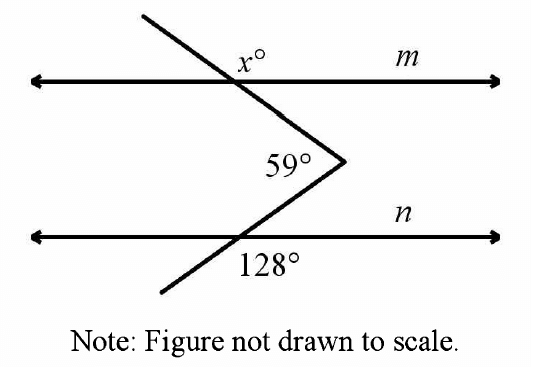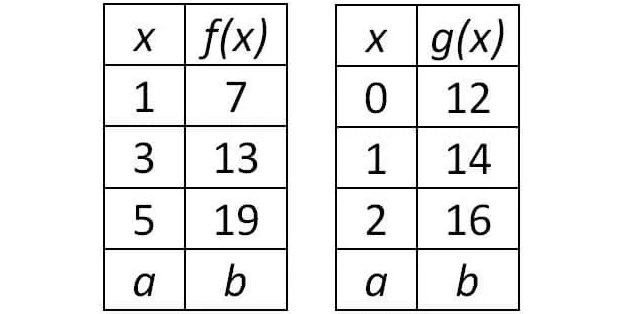PSAT MATH PREPARATION
The PSAT Math section is composed of two sub-sections: a 45-minute calculator-optional section, and a 25-minute no-calculator section. These sections include a total of 48 questions: 40 multiple-choice questions and 8 student-produced response.
In this section, we are going to cover the math topics and skills required to answer PSAT Math questions.
ARITHMETIC
Integer :
Whole numbers that are positive or negative and included zero.
Examples :
-1, 0, 1, 4.0, -20/2 are all integers.
Consecutive integer :
1, 2, 3, 4 are consecutive integers.
2, 4, 6, 8, ... are consecutive even integers
1, 3, 5, 7, .........are consecutive odd integers.
Whole numbers :
These are counting numbers, including 0. There are no negative in whole numbers.
Example 0, 1, 2, 3, ...........
Rational numbers :
All integers, fractions, decimals, repeating decimals and terminating decimals.
Example 1, 0.121212, 1/8, 19.01
Irrational numbers :
These numbers cannot be written as fractions. These are non repeating decimals.
Example : 0.162728..........., √2, π
SCIENTIFIC NOTATION
To write a number which is greater than 1 in scientific notation, move the decimal point left and use a positive exponent.
To write a number which is less than 1 in scientific notation, move the decimal point right and use a negative exponent
To know more about writing a number in scientific notation, please visit the pages.
PEMDAS
This rule can be used to simplify or evaluate complicated numerical expressions with more than one binary operation easily.
Very simply way to remember PEMDAS rule :
P -----> Parenthesis, E -----> Exponents
M -----> Multiplication, D -----> Division
A -----> Addition, S -----> Subtraction
To look into example problems based on this topic, please visit "PEMDAS Rule"
PRIME OR COMPOSITE
A prime number is a whole number that only has two factors which are itself and one. 2 is the only even prime number.
A composite number has factors in addition to one and itself. The numbers 0 and 1 are neither prime nor composite. All even numbers are divisible by two and so all even numbers greater than two are composite numbers.
To know more about prime or composite numbers, please visit the page "Prime or composite"
GCF and LCM
GCF :
The greatest common factor of two numbers is the largest positive integer that is factor of both numbers.
To know more about GCF, please visit the page "Greatest common factor"
LCM :
The smallest among the common multiples of two or more numbers is called their least common multiple ( LCM)
To know more about LCM, please visit the page "Least Common Multiple"
OPERATIONS ON EVEN AND ODD INTEGERS
|
Odd ± odd = Even Odd ± Even = Odd Even ± Even = Even |
Odd x odd = Odd Odd x Even = Even Even x Even = Even |
FACTORS AND MULTIPLES
Factor :
A factor is a positive integer that divides evenly into a given number with no remainder.
Multiple :
A multiple is a number that a given number will divide into with no remainder.
THE ORDER OF OPERATIONS
This rule can be used to simplify or evaluate complicated numerical expressions with more than one binary operation easily.
Very simply way to remember PEMDAS rule :
P -----> Parenthesis, E -----> Exponents
M -----> Multiplication, D -----> Division
A -----> Addition, S -----> Subtraction
To look into example problems based on this topic, please visit "PEMDAS Rule"
DIVISIBILITY RULES
A divisibility test is a rule for determining whether one whole number is divisible by another. It is a quick way to find factors of large numbers.
To know the shortcuts of divisibility test, please look into the page
FRACTIONS AND DECIMALS
A fraction represents a part of a whole or, more generally, any number of equal parts.
To know about adding, subtracting, multiplying and dividing fractions, please visit the page "Operations with fractions."
PERCENTS
To convert a fraction or decimal to a percent, multiply by 100%. To convert a percent to a fraction or decimal, divide by 100%
- Percentage of a Number
- Converting fraction into percentage
- Compare percents to fractions and decimals
EXPONENTS AND SQUARE ROOTS
Exponents :
3 x 3 is written as 32
The base is 3 and exponent is 2.
54 = 5 ⋅ 5 ⋅ 5 ⋅ 5
In general, if n is any nonzero numbers, then n0 = 1
To know more about exponents, please visit "Exponents"
Square roots :
Since 62 = 36, 6 is the square root of 36.
The square root of 64 is 8.
To know more about square roots, please visit the page "Square Roots"
INEQUALITY SYMBOLS
- > means "is greater than" (5 > 3)
- < means is less than (3 < 5)
- ≥ means greater than or equal to.
- ≤ means is less than or equal to.
To know more about writing linear inequality from word problems, pleased visit the page "Write a linear inequality word problems".
MEAN, MEDIAN AND MODE
Mean :
Average = Sum of terms/Number of the terms
Median :
The median of a group of terms is the value of the middle term with the terms arranged in increasing order.
When there is an even numbers of terms, the median is the average of the two middle terms with the terms arranged in increasing order.
- Median of ungrouped data
- How to find median of grouped data
Mode :
The mode is the value of the terms that occurs most.
- How to find mode of ungrouped data
- How to find the mode of the data
- Finding mode of ungrouped data worksheet
- Find mean median and mode of grouped data
RATIO AND PROPORTION
Ratio :
The comparison of 2 quantities of the same kind by means of division is termed as ratio.
Proportion :
An equality of two ratios is called a proportion.
Four quantities a, b, c, d are said to be in proportion if a : b = c : d (also written as a : b :: c : d). That is, if a/b = c/d.
To know more about ratio and proportion, please visit the page
PROBABILITY
An event is a collection or set of outcome.
The sample space is a set of all possible outcomes for an event. A sample space can be small, such as the 2 outcomes when a coin is flipped. Or a sample space can be large, such as the possible number of Texas Classic automobile license plates.
Probability = Number of desirable outcomes/Total number of possible outcomes
- Finding probability
- Finding experimental probability
- Using experimental probability to make predictions
PSAT MATH ONLINE WORKSHEETS
PSAT online practice test math - Paper 1
PSAT online practice test math - Paper 2
PSAT online practice test math - Paper 3
PSAT online practice test math - Paper 4
PSAT online practice test math - Paper 5
PSAT online practice test math - Paper 6
PSAT online practice test math - Paper 7
PSAT online practice test math - Paper 8
PSAT online practice test math - Paper 9
PSAT online practice test math - Paper 10
PSAT online practice test math - Paper 11
Kindly mail your feedback to v4formath@gmail.com
We always appreciate your feedback.
©All rights reserved. onlinemath4all.com
Recent Articles
-
Quadratic Equation Problems with Solutions
Apr 12, 25 08:21 PM
Quadratic Equation Problems with Solutions -
Digital SAT Math Problems and Solutions (Part - 142)
Apr 11, 25 06:26 PM
Digital SAT Math Problems and Solutions (Part - 142) -
Digital SAT Math Problems and Solutions (Part - 141)
Apr 11, 25 10:38 AM
Digital SAT Math Problems and Solutions (Part - 141)

